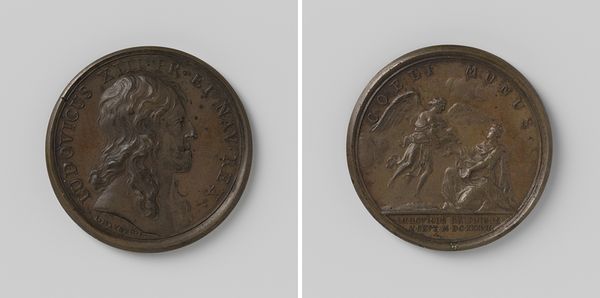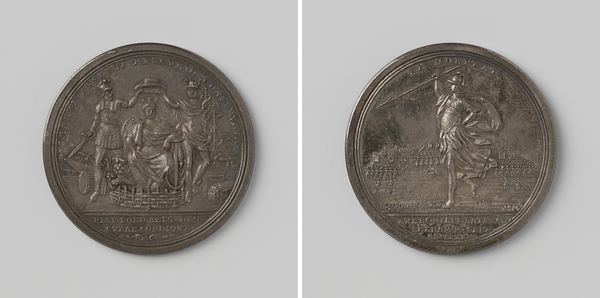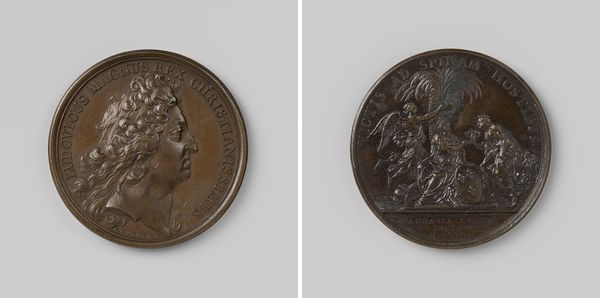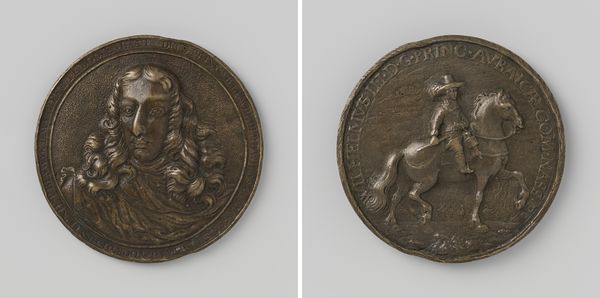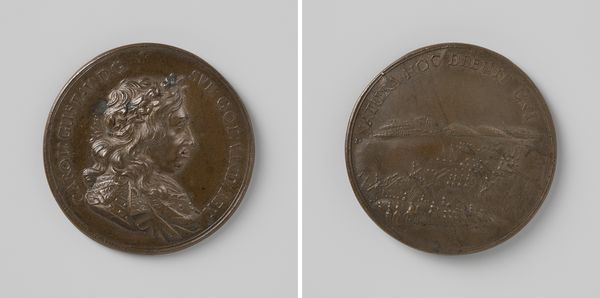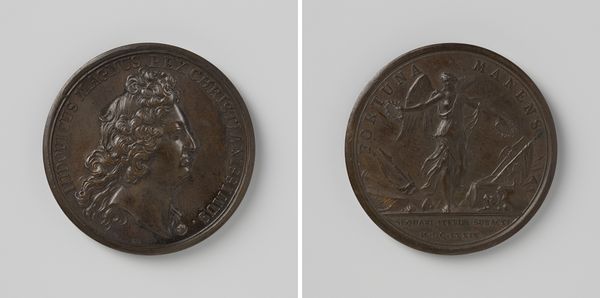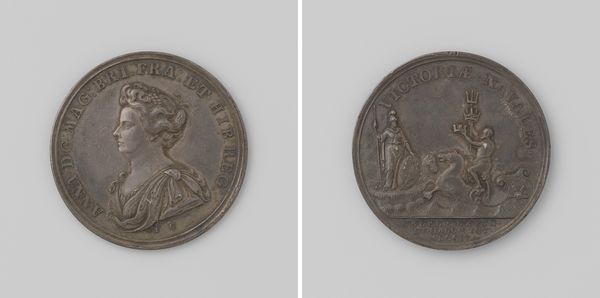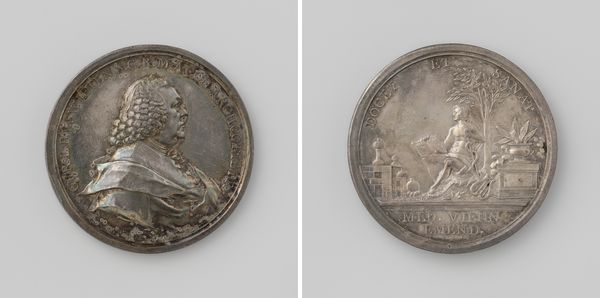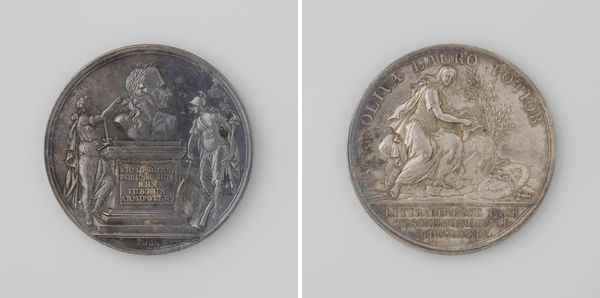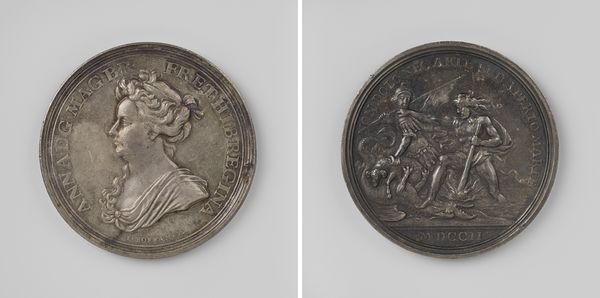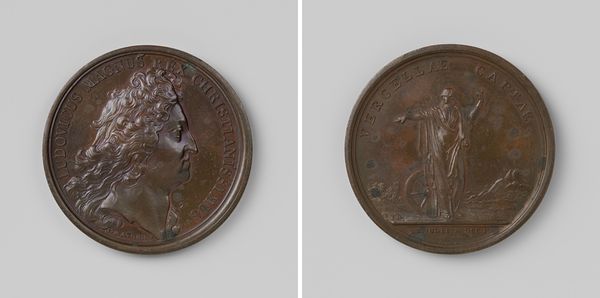
metal, bronze, sculpture
#
portrait
#
neoclacissism
#
metal
#
sculpture
#
bronze
#
sculpture
#
history-painting
#
statue
Dimensions: diameter 5.0 cm, weight 52.93 gr
Copyright: Rijks Museum: Open Domain
Editor: This is a bronze medal from 1826 by Joseph-Pierre Braemt, titled *Opening van het Kanaal van Henegouwen 1826.* The detail is pretty striking! I'm immediately drawn to the contrasting images on each side - one a stately portrait, the other a busy scene with many figures. How do you interpret this work? Curator: This medal speaks volumes about the socio-political context of the time. Medals like this were frequently commissioned by states or institutions to commemorate important events, functioning as both art and propaganda. Can you identify elements of neoclassicism in its design and purpose? Editor: Yes, I think so! The portrait is definitely in that style - very stoic and idealized. And the scene on the reverse... is that supposed to be allegorical, maybe even suggesting some historical parallels? Curator: Exactly. The reverse likely depicts an allegorical representation of the canal's opening, maybe a triumphant scene with symbolic figures representing prosperity, progress, and the joining of regions. We can see how a state uses art to promote ideas. What do you make of the use of bronze specifically? Editor: I suppose bronze conveys a sense of permanence and importance - something meant to last and be taken seriously. Were these distributed widely, shaping public opinion? Curator: It's plausible that they would have been distributed among dignitaries, stakeholders, or even sold to the public, influencing perceptions about the canal project and the ruling powers. It made a grand statement. Editor: So this medal is more than just a piece of art; it’s an artifact that tells us about how public works projects were presented and perceived in 1826. Fascinating! Curator: Precisely! It highlights how artistic choices reflect and shape political narratives and the cultural memory of a time. It truly provides food for thought about the relationship between art, power and public memory.
Comments
No comments
Be the first to comment and join the conversation on the ultimate creative platform.
